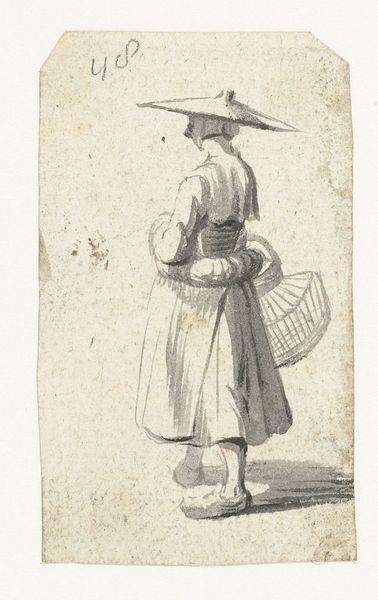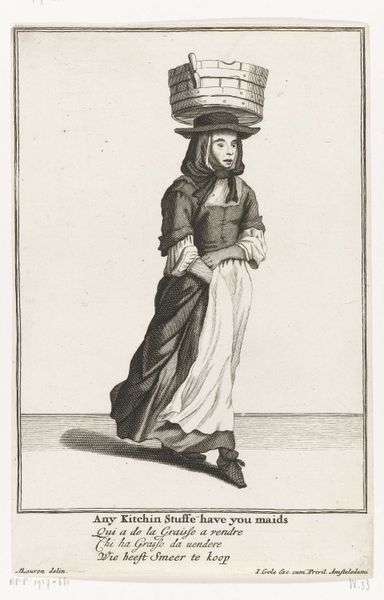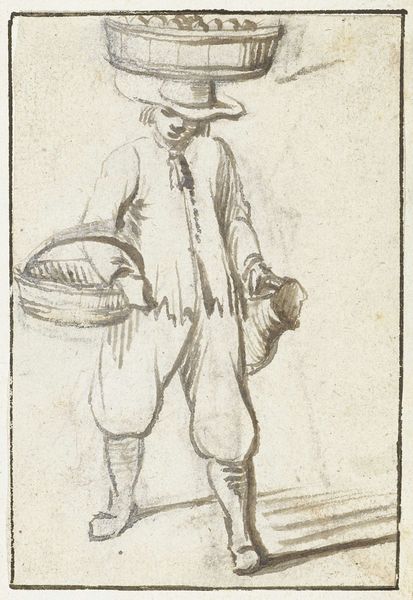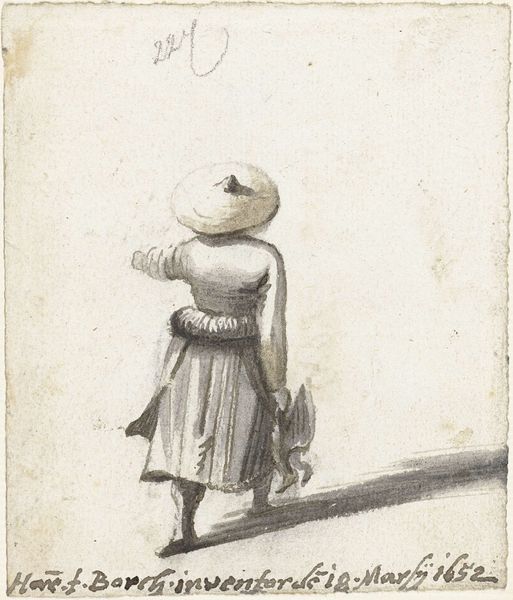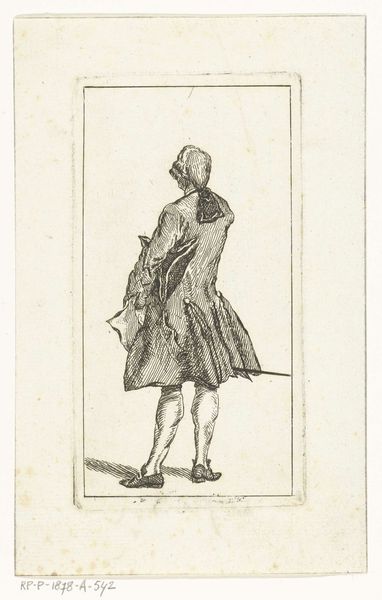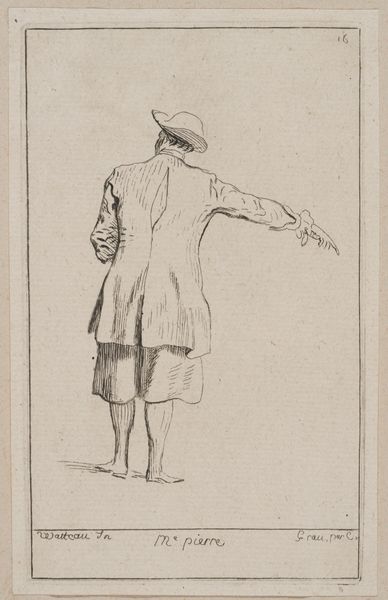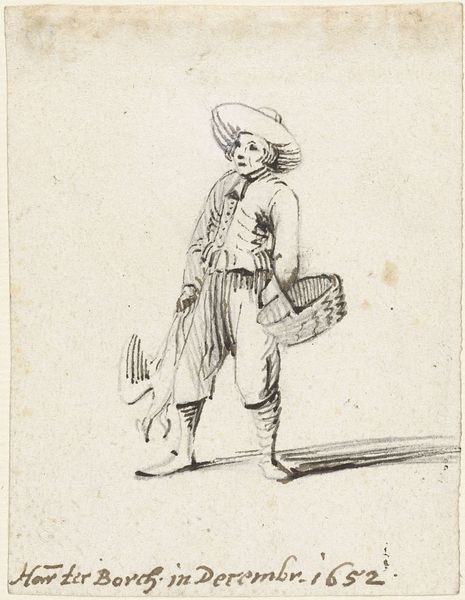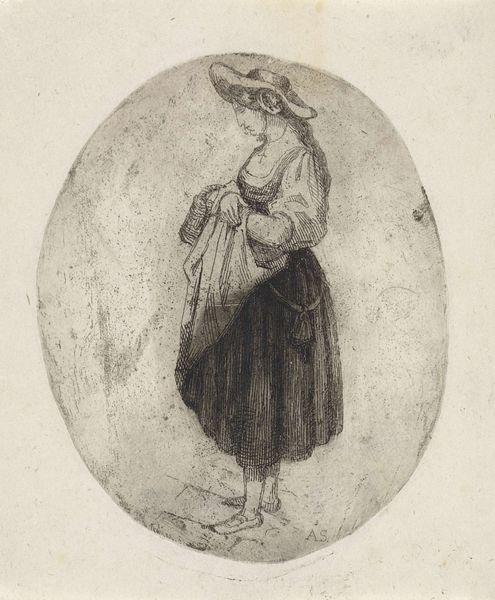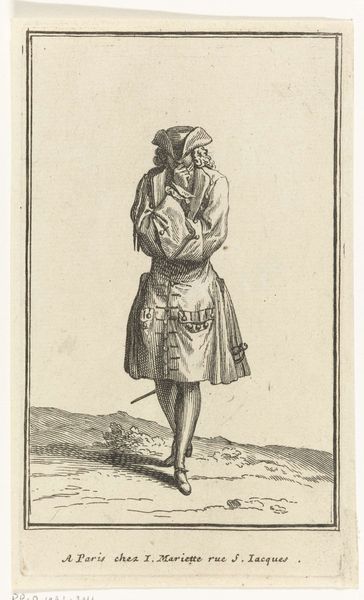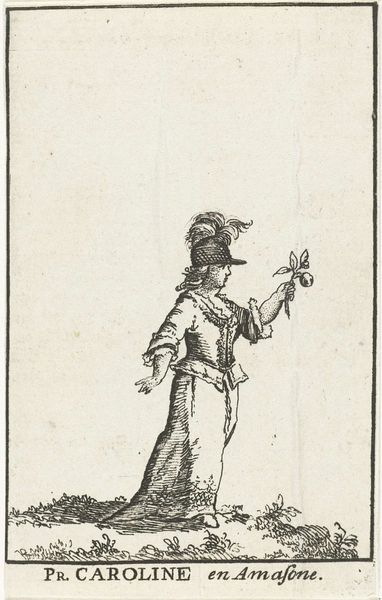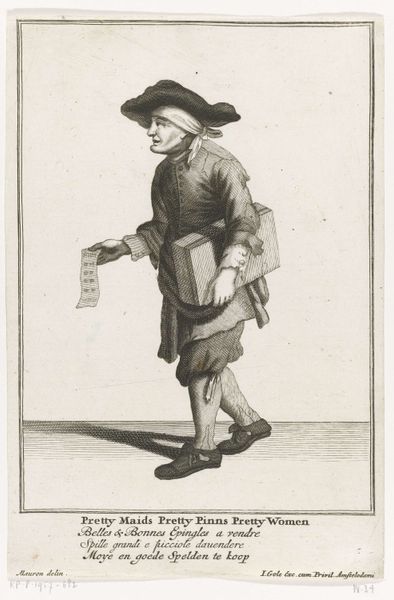
drawing, pen
#
portrait
#
drawing
#
dutch-golden-age
#
pen
#
genre-painting
Dimensions: height 107 mm, width 81 mm
Copyright: Rijks Museum: Open Domain
Editor: Here we have Harmen ter Borch's "Wijzende jongeman met breedgerande hoed," made around 1651. It's a pen drawing. I’m immediately struck by the detail he achieves with such simple materials, and the kind of everyday action that is captured. What can you tell me about the material implications of this drawing, the pen strokes and their role? Curator: Well, let’s consider the cost of pen and paper in the mid-17th century. These materials weren’t as readily available to everyone. Ter Borch’s choice reflects access, skill and intended audience. The seemingly spontaneous sketch represents careful consideration. What do the young man's clothes signify, and what can this signify regarding materiality and social class? Editor: They look pretty ordinary, not necessarily fancy or ornate, and the sketch gives us no idea of their true colours and texture. Does that downplay the man's societal status in the picture? Curator: It’s a complex question. Yes, perhaps intentionally understated. But notice the lines depicting the folds and draping. The labor involved in creating and maintaining even simple garments was significant. Ter Borch focuses our attention on the material realities of daily life, doesn’t he? The consumption of materials implied. Editor: So the artist uses this easily dismissed form of art to capture production efforts needed to manufacture clothes...I guess that says a lot. What did people do with drawings like these at the time? Curator: They were often studies, not always intended for public display like paintings, a key aspect of the making of art. They represent a step in the production of other works. Think of it as a process – labor yielding a specific, purchasable commodity. Now, if we circle back to Ter Borch’s labor invested into it, the drawing becomes the commodity itself. The lines between preparation and artwork begin to blur. Editor: That really changes my view of it! It’s not just a simple sketch; it shows the value we can assign to production, skill, and time through available resources and effort. Curator: Exactly. By analyzing the drawing’s materiality, we get a richer understanding of its place in the 17th-century social and economic context.
Comments
No comments
Be the first to comment and join the conversation on the ultimate creative platform.

